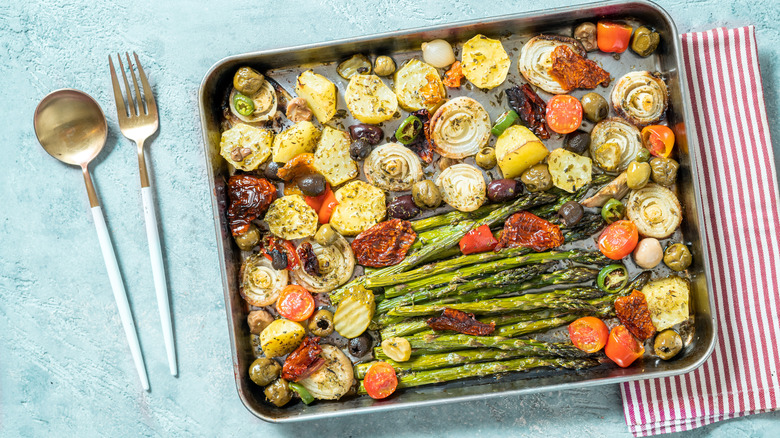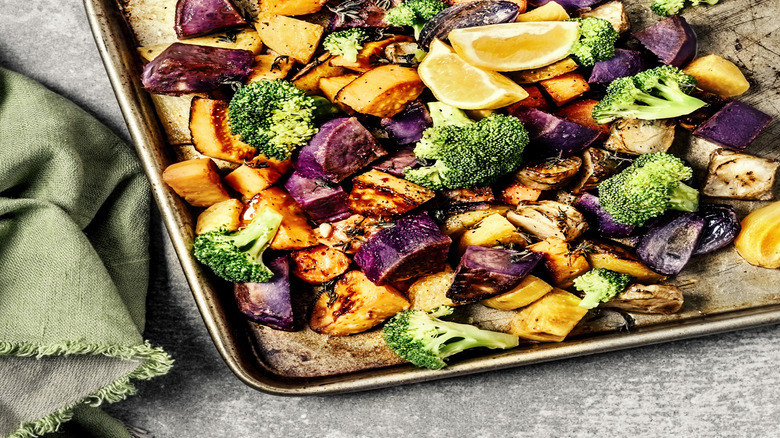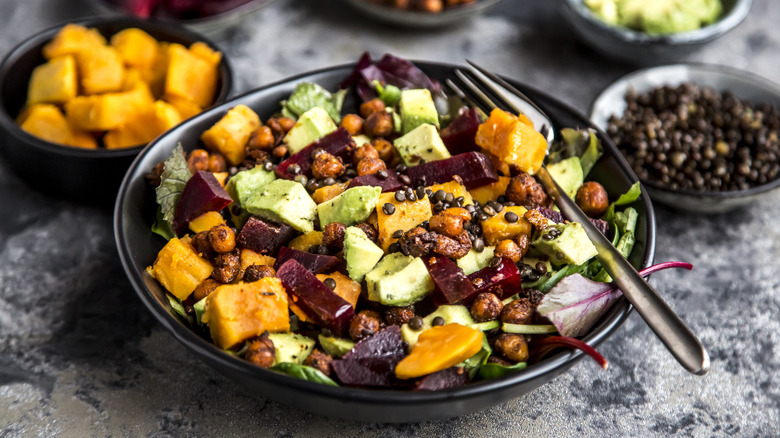Sheet Pan Salads Need To Be Your Winter Dinner Staple
Salads are a great standby meal in the warmer months when you can load a bowl up with all the crisp, cold veggies you want. But as the temperatures start to drop, we usually start craving meals that are a little more substantial and won't leave us feeling chilly.
Fall and winter meals usually bring to mind comfort foods like creamy mac and cheese and rich stews: foods that are the total opposite of the light and fresh summer salads. But why should healthy eating only be reserved for sunny days?
If you haven't seen them by now, there is a new trend online regarding baked salads. Baked salads utilize the huge variety of hearty vegetables that get harvested during the chilly fall and winter months. And best of all, baked salads come together on a sheet pan so you won't have too many dishes to worry about after dinner is served.
How to make a baked salad at home
There isn't one correct way to bake a salad, but rather thousands of possible combinations you can tailor to your own unique tastes. The best part is that once you get the process down, you can use the same steps to make other kinds of baked salads by simply changing out the ingredients.
You will need to start with the basics; a sheet pan, a knife, a cutting board, and a ripping hot oven. Start by chopping your veggies of choice — anything that lends itself well to roasting is sure to be a good fit here. Think cruciferous vegetables like cabbage, kale, Brussels sprouts, broccoli, and cauliflower for your base instead of the usual lettuce. Slice them thin enough that they'll cook quickly in the oven. Then think about your enhancers, like savory onions or sweet butternut squash which will add flavor and texture. Roasting the veggies hot and fast, at around 450 degrees Fahrenheit for 5 to 10 minutes, will make sure they retain a toothsome crunch while also producing some flavorful charred bits.
Flavoring your baked salad
Your dressing and salad accessories are what take a ho-hum bowl of veggies to a viral-worthy baked salad. For a dressing, you can start with a basic ratio of 3 parts oil to 1 part vinegar — though I prefer a zippier dressing that leans more towards a 2:1 ratio with a dab of Dijon mustard as an emulsifier plus salt and pepper to season.
From there you can add most anything in your fridge and pantry. I like to add a bit of jam or preserves to add a fruity sweetness, but you can also use honey or maple syrup. Then the seasonings: garlic, herbs, spices, whatever you have on hand are what make the salad your own. Toss the dressing on the veggies when they come out of the oven so they can start to soak up all that tasty dressing.
But don't forget about the small details. Roast nuts in the oven for crunch, add a sprinkle of cheese for a salty edge, or add dried fruits for a chewy bite. You could also add grains like quinoa or brown rice for a bit of bulk, too. From there, you can add bacon bits, shredded rotisserie chicken, or anything else your heart desires.


